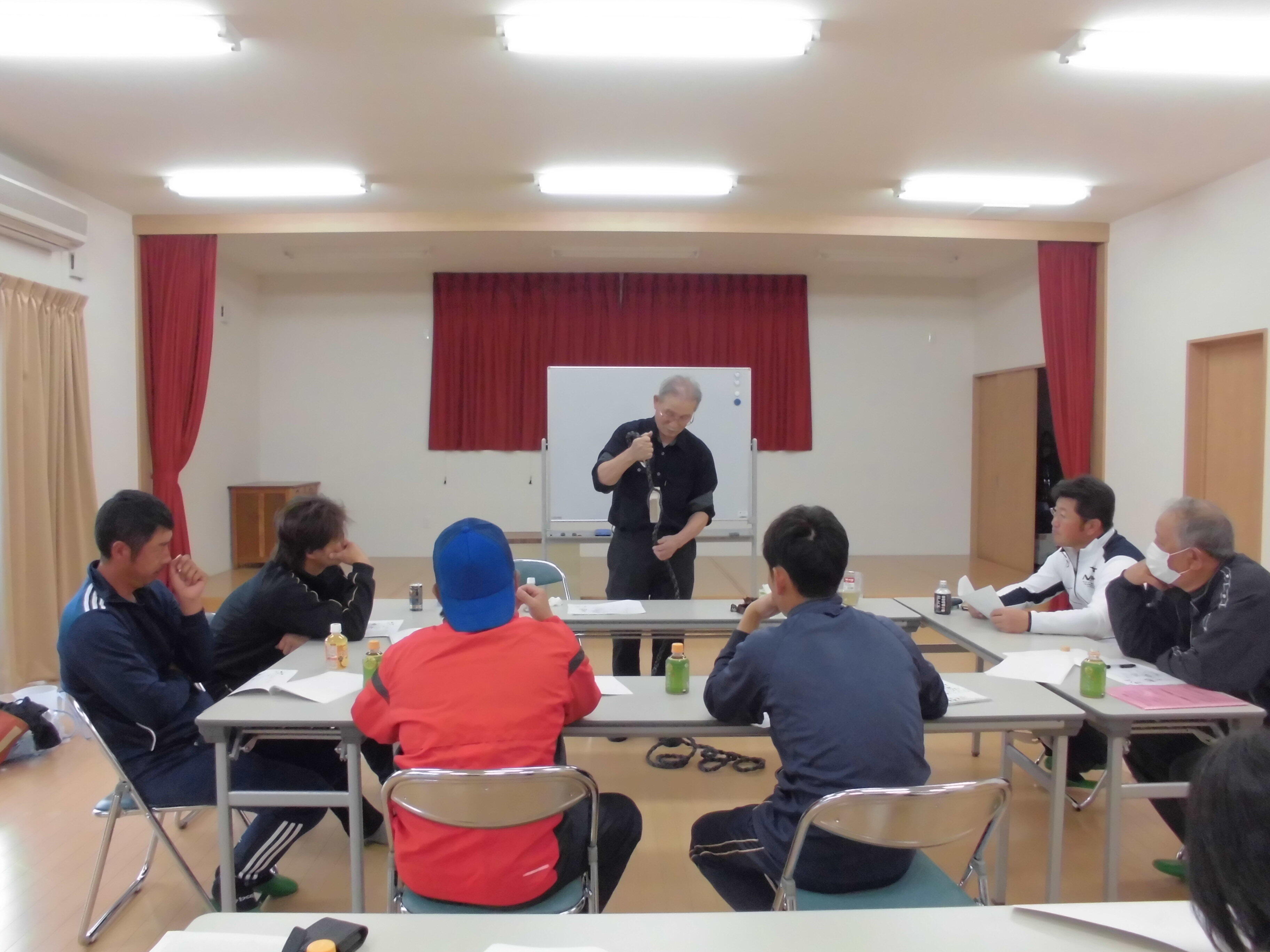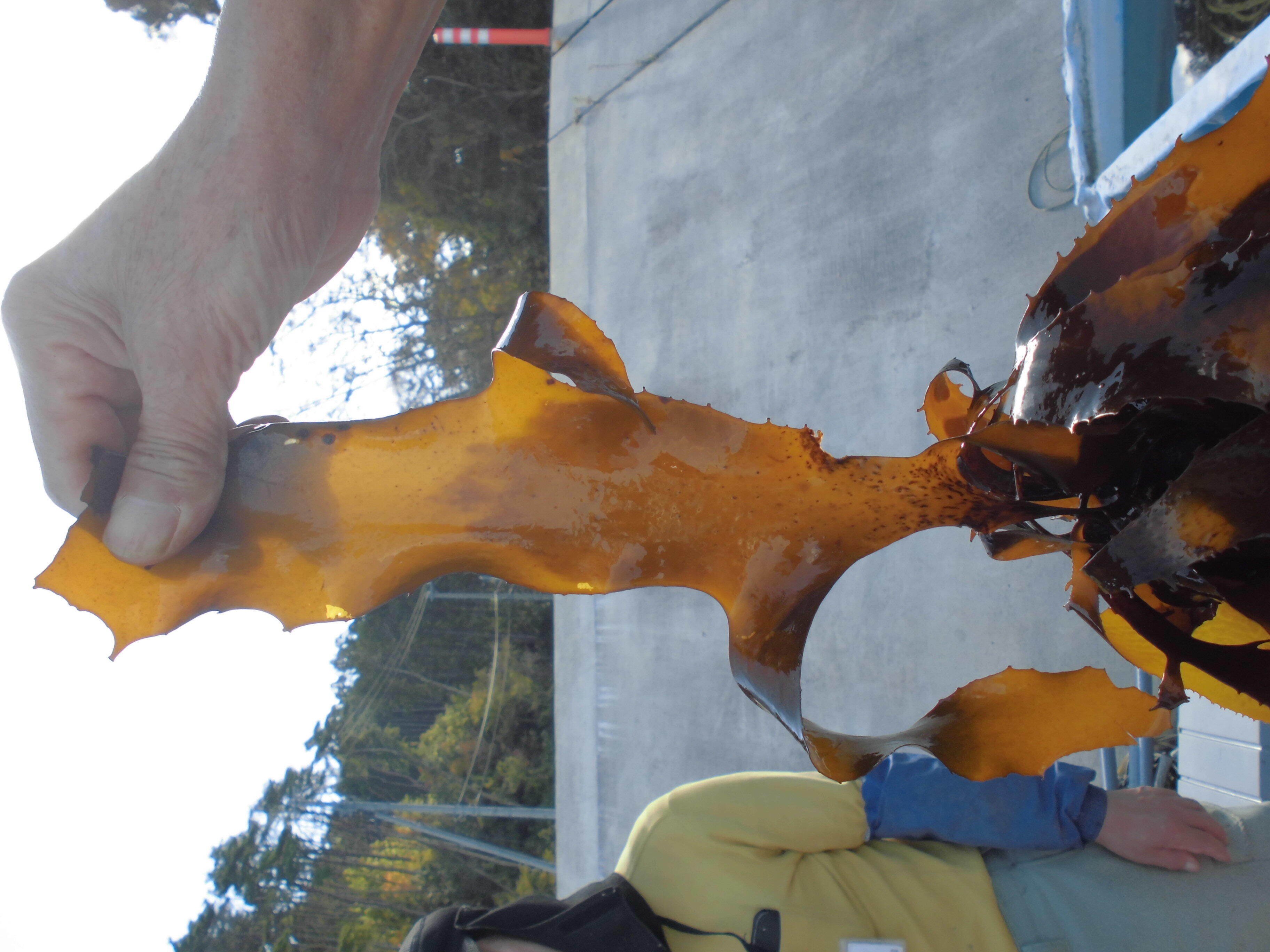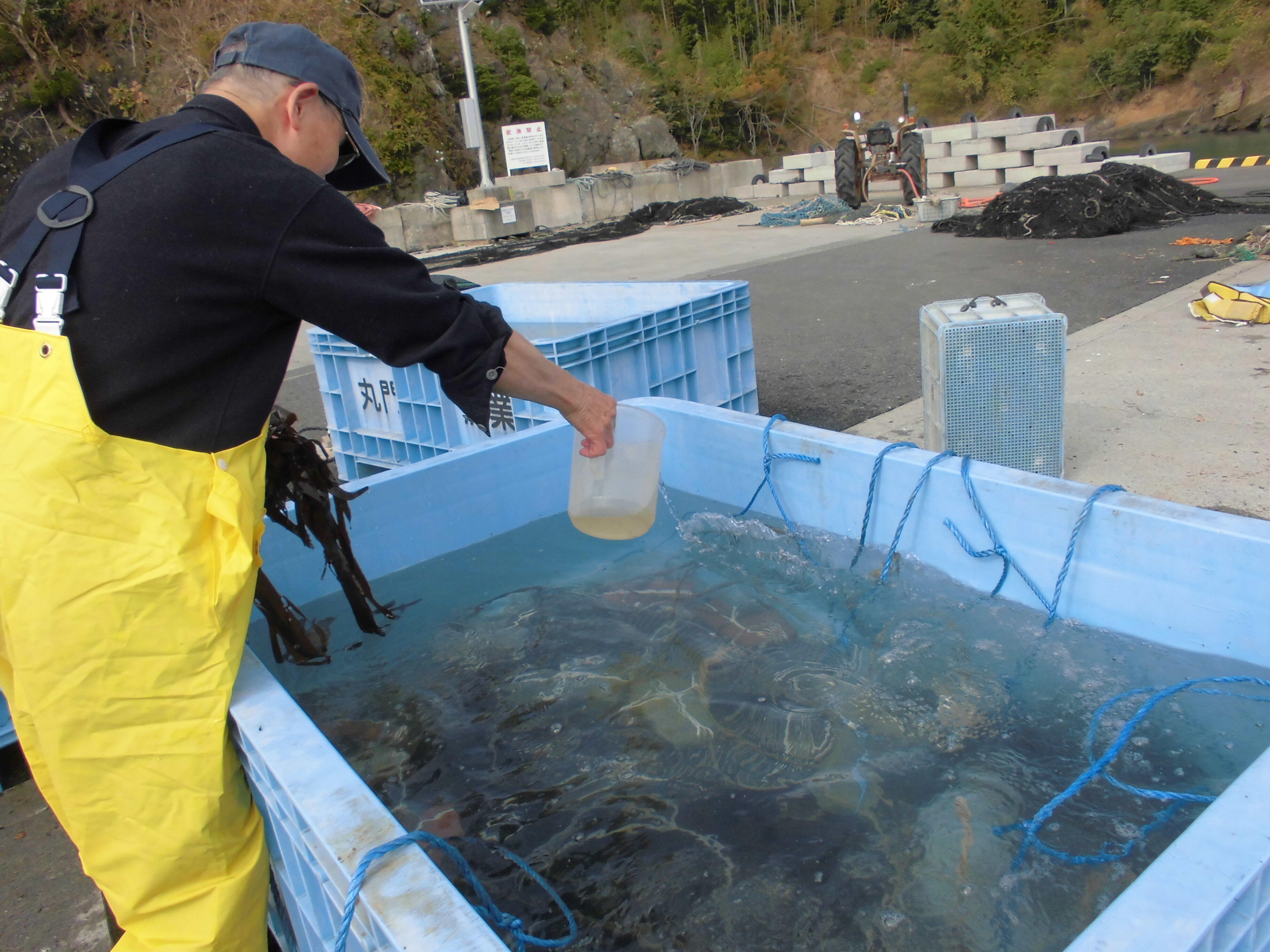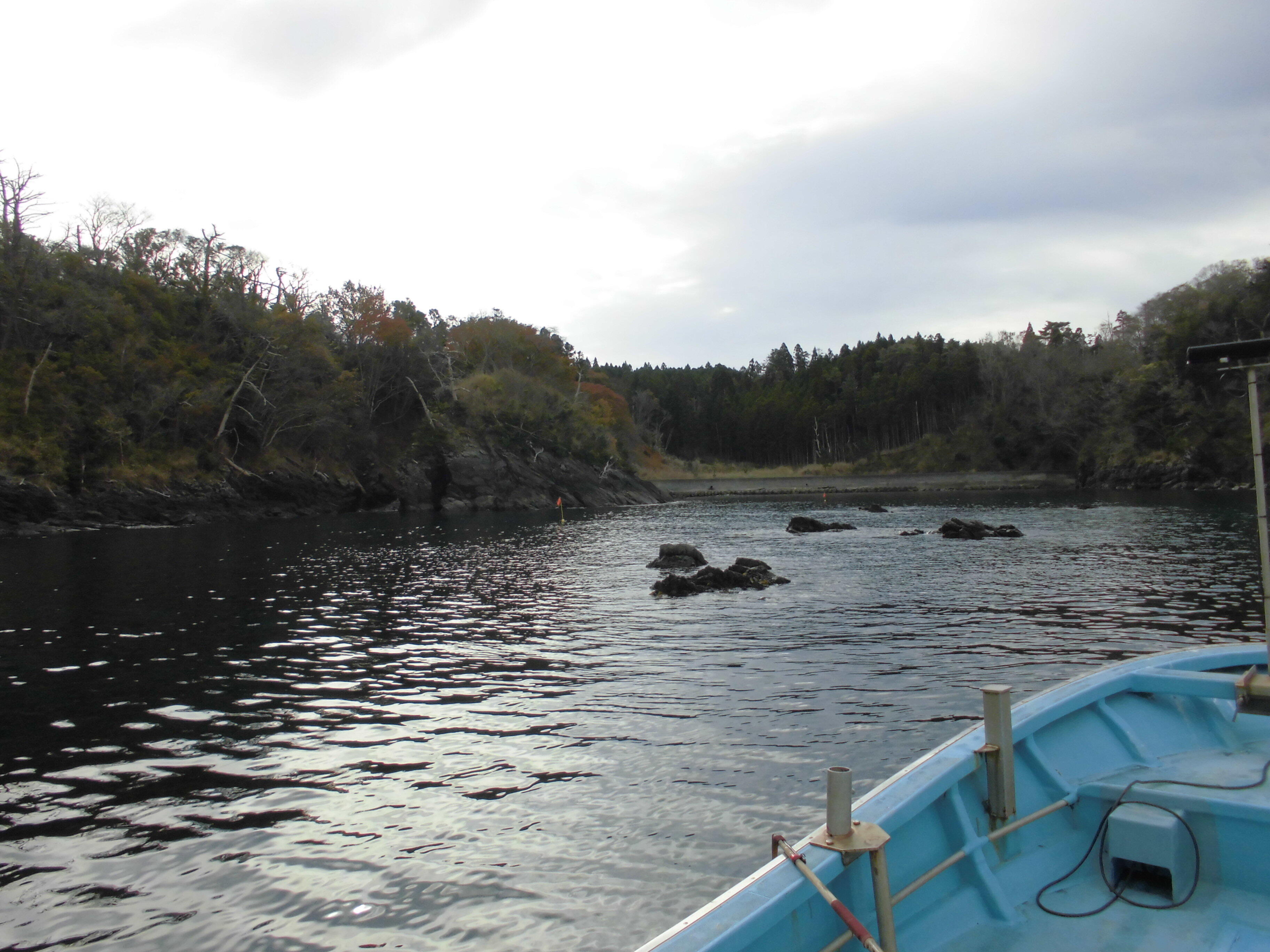[Restoration of seaweed beds] Researchers from Tokyo University of Marine Science and Technology and fishermen jointly held a "Arame Seeding Seminar". (10/28, 11/6)
December 2020, 11
In recent years, sea urchins, one of the predatory organisms, have eaten up seaweed, known as "isoyake", which has become a serious problem nationwide.
Here in the Utatsu district of Minamisanriku-cho, Miyagi Prefecture, the catch of abalone, which eats seaweed just like sea urchins, has plummeted, causing a major blow to coastal fisheries.
Therefore, the local youth group was established when they had to do something about the "isoyake".With the aim of restoring sea-burned arame fishing grounds, we are working with Hiroshi Yamakawa, a visiting researcher at our university (Department of Ocean Policy and Culture), to regenerate seaweed beds.
On October 10th (Wednesday), a “briefing session on the methods and procedures for growing arame (commonly known as Ecklonia) seedlings” was held. Under the guidance of local fishermen, we grasped the current state of sea desertification and monitored arame fishing grounds. We conducted a survey.
On November 11th (Friday), an “Arame Seeding Seminar” was held, and after Mr. Yamakawa confirmed the procedure, Miyagi Prefecture Kesennuma Regional Promotion Office and Kesennuma City Fisheries Division participated. We held a training session on Seedling Collection and Intermediate Raising.
Next year, we plan to attach the grown arame seedlings to natural rocks and artificial sand, and then transplant them to seashores to expand the seaweed bed creation.
The seedling period for arame is short, from October to November, when arame matures.After moving to the shore, regular monitoring surveys are required.
The Sanriku Satellite will continue to closely exchange information with coastal fishermen and share information with our university's algology research, etc., to support countermeasures against sea desertification.

Professor Yamakawa explaining about Isoyake

Sorting of the "Asci Squam"

"drying in the shade"

Release zoospores soaked in seawater

Inject the zoospore solution into the seedling tank and wait for it to settle.

After the zoospores reach the bottom, they droop offshore.

